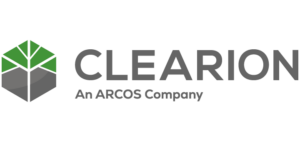Posted by Madelyn Mateo

Anyone working in the rights-of-way vegetation management business has likely heard about the possibility that the Monarch butterfly will be listed as an endangered butterfly species. The impact of this on how rights of way lands will be used and managed would be significant.
To put this in perspective, rights of way occupy approximately 1% of US land area. The electric transmission system, for example, covers approximately 450,000 miles (9-11 million acres) that utilities manage using integrated vegetation management solutions. Conservation organizations are interested in finding out if these lands qualify as habitat for pollinators, including the protected, threatened, and endangered species. In addition there is interest in increasing the population of native and honey bees, which pollinator habitat supports as well. It is in everyone’s interest to support these efforts, not only to protect the Monarch butterfly and other pollinators, but also to make sure that the utilities that use potential habitats can continue their operations in sustainable ways. That’s where Clearion can help.
Clearion currently provide service to 40 companies that touch a portion of these rights of way. That amounts to more than two thousand people who use the software to manage their vegetation programs. By giving these fieldworkers tools that work in the background to collect habitat data, they can contribute important information to conservation specialists and easily report on their sustainability efforts without adding to their workload. Here’s a bit more about how partnerships between Clearion and its utility customers can work to support national conservation efforts.
Within the last couple of years the Energy Resources Center (ERC) at the University of Chicago has facilitated the Rights-of-Way Habitat Working Group that meets regularly to engage diverse stakeholders to collaborate and promote pollinator habitat. The ERC is also encouraging the development of a ROW Habitat Working Group database to serve as a central repository for tracking existing, restored, and potential habitat areas to further our understanding of the ecological benefits and opportunities of rights-of-way. This database system aims to facilitate conservation partnerships within and across sectors, supports engagement with resource agencies to help avoid future listings under the Endangered Species Act, and works to promote voluntary conservation actions for at-risk or listed species.
Recently Clearion developed a partnership with Iris Caldwell from the ERC and Andy Olson from the East Central Energy company. ECE currently uses Clearion as a tool to manage its Integrated Vegetation Management (IVM) program. Andy recently mentioned that he is “open to the idea of tracking pollinator habitat with Clearion Mobile as a case study to understand the existing pollinator habitat within the ECE ROW territory and contribute that data to the ROW Habitat Database.” This will open doors in the future for ECE to collaborate with local NGOs, universities, and the public to maintain existing habitat and convert potential pollinator habitat to continue to support pollinator populations.
How exactly will Clearion work with the utility company ECE? In a conversation with Clearion’s Solution Architect Chris Rodgers, he explained that Clearion will obtain a copy of the ERC current database schema that defines the data of interest to be collected and will mimic the schema in the Clearion data collection tool. The Clearion software will allow field personnel to log habitats by inserting a polygon in Clearion Mobile while conducting other field work and also the ability to review satellite imagery data to identify which lands qualify as potential pollinator habitat using Clearion Mobile from a desktop computer at the office. Once the habitat data is delivered from ECE it may be loaded seamlessly into the ERC database. ECE is a long term and capable customer of Clearion and we look forward to sharing a great story in the near future.
If you are a Clearion user and are interested in how you may become involved in a similar project to identify and log pollinator habitat, please feel free to reach out. If you are not a Clearion user and are still interested, contact us too.
